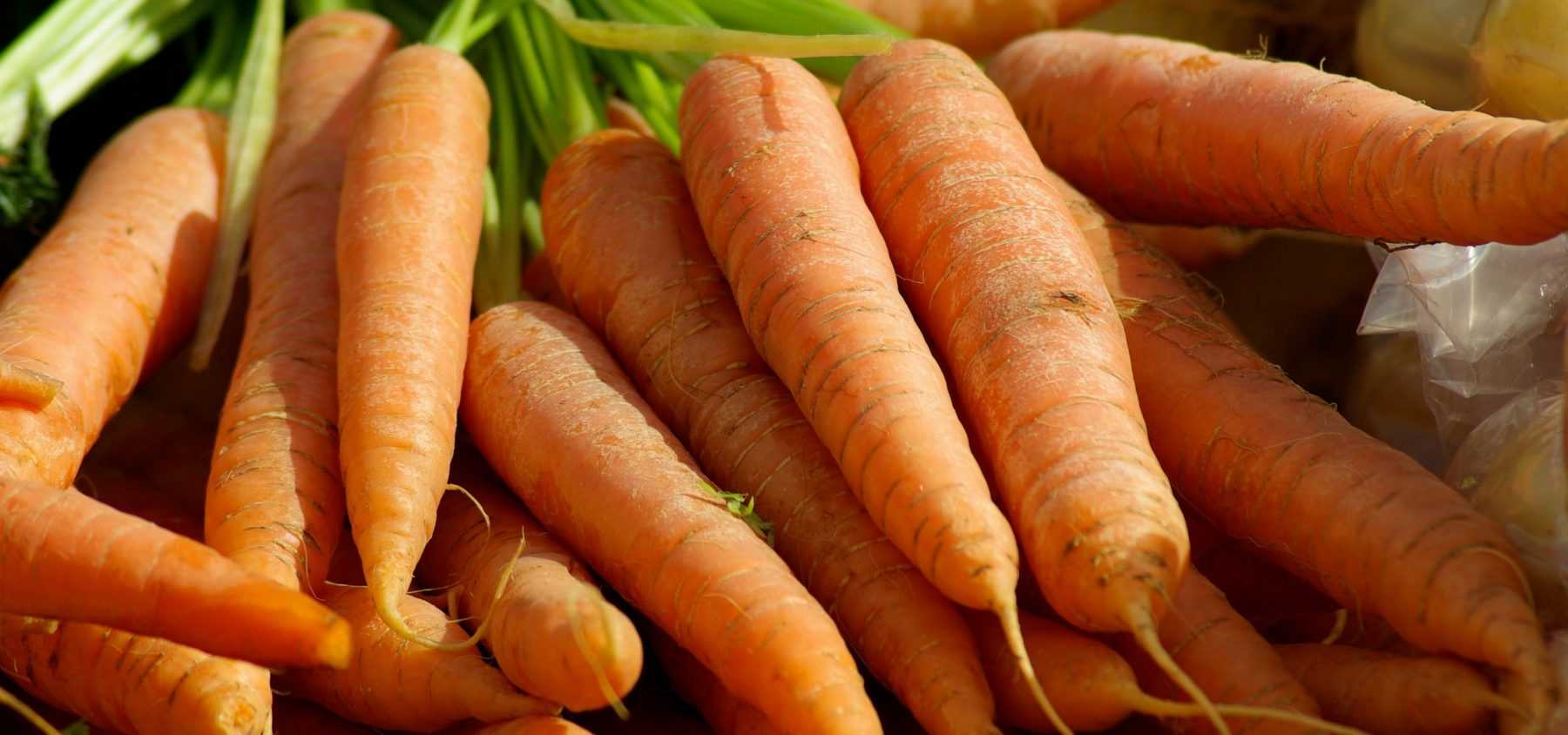
Carrot: Sowing, Growing and Harvesting in the Vegetable Garden
Contents
The carrot in a nutshell
- Carrots thrive in deep, rich and light soils with sunny exposure.
- They come in various cultivars with diverse shapes and colours.
- Mastering sowing and thinning are the two main keys to successful carrot cultivation.
- Carrots grow particularly well alongside radishes and plants from the onion family.
- Harvesting is extremely simple and they can be stored throughout winter.
Our expert's word
The carrot is a root vegetable widely grown and consumed in France and around the world, though it’s not as consistently present in vegetable gardens as tomatoes are. Yet, the flavour of this famous root often bears no resemblance to shop-bought varieties when lovingly tended by our own hands. Moreover, the vast range of available varieties allows for delightful gastronomic discoveries.
Carrots come in diverse shapes, colours and sizes. Among the best-known varieties is the ‘Nantaise’ carrot, prized for its flavour and ease of cultivation, its only requirement being light soil for optimal growth. Small round carrots like ‘Marché de Paris’ are also highly valued for their taste. Coloured varieties such as ‘Cosmic Purple’ or ‘Blanche de Küttingen’ will add an original touch to your favourite dishes.
Carrots can be grown throughout France – you simply need to find the variety or varieties best suited to your region and soil type. In terms of preferences, loose, deep, light and rich soil will satisfy long and half-long carrots, while heavy soil is better suited to small round varieties.
Carrots are sown directly in situ, from spring through summer. The sowing should be relatively sparse and carefully monitored throughout the germination period. This is followed by thinning out if the seedlings are too crowded. Thereafter, maintenance involves watering, weeding and mulching while awaiting harvest.
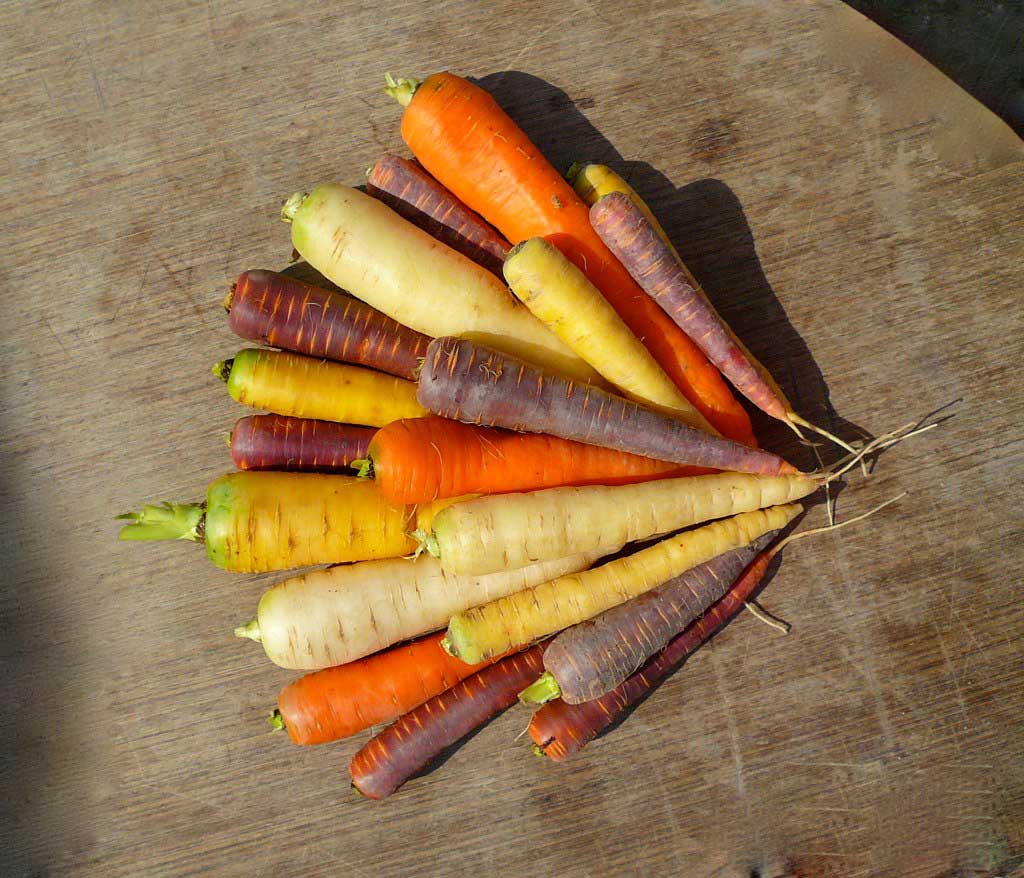
A wonderful diversity of varieties
Description and botany
Botanical data
- Latin name Daucus carota subsp. sativus
- Family Apiaceae
- Common name Carrot
- Flowering Biennial grown as annual
- Height 4 to 5 years
- Exposure Sun
- Soil type Deep, rich, light
- Hardiness hardy to very hardy
In the wild, the carrot is a pioneer plant originating from Europe and South Asia, particularly Afghanistan. This root isn’t fleshy, its core is very fibrous and inedible, and it’s red to purple in colour. Humans took an interest in it as early as antiquity, initially for its aromatic properties – indeed, its foliage emits a pleasant fragrance.
Over time, the carrot reached Europe and was domesticated from the Middle Ages onwards to produce fleshier roots in white, yellow and purple hues. It became a vegetable around the 13th century, though still fibrous. The carrot as we know it today – with its beautiful orange root – has a relatively recent origin in history.
The first selections of orange carrots were made in the Netherlands during the 16th century, resulting from crosses between red and white carrots. The first orange carrot was called the ‘Long Orange’. Its success was immediate, and breeders created many other varieties over the centuries to achieve the diversity we know today.
The cultivated carrot (Daucus carota subsp. sativus) is a biennial herbaceous plant from the Apiaceae family (formerly Umbelliferae). In its first year of growth, its bright green, lobed and pubescent foliage reaches about 30 cm tall, borne by multiple stems emerging from the crown. Its taproot, characteristic of Apiaceae, is fleshy and more or less thick and elongated, with skin and flesh colour varying by variety. Modern breeding has reduced the fibrousness of the central core. The carrot produces a flower stalk in its second year, bearing small white flowers arranged in umbels from June onwards. This flowering is particularly attractive to pollinating insects. The seeds (achenes) are rounded on one side and flat on the other, grouped in pairs and surrounded by hairs that help them cling to animal fur for natural dispersal.
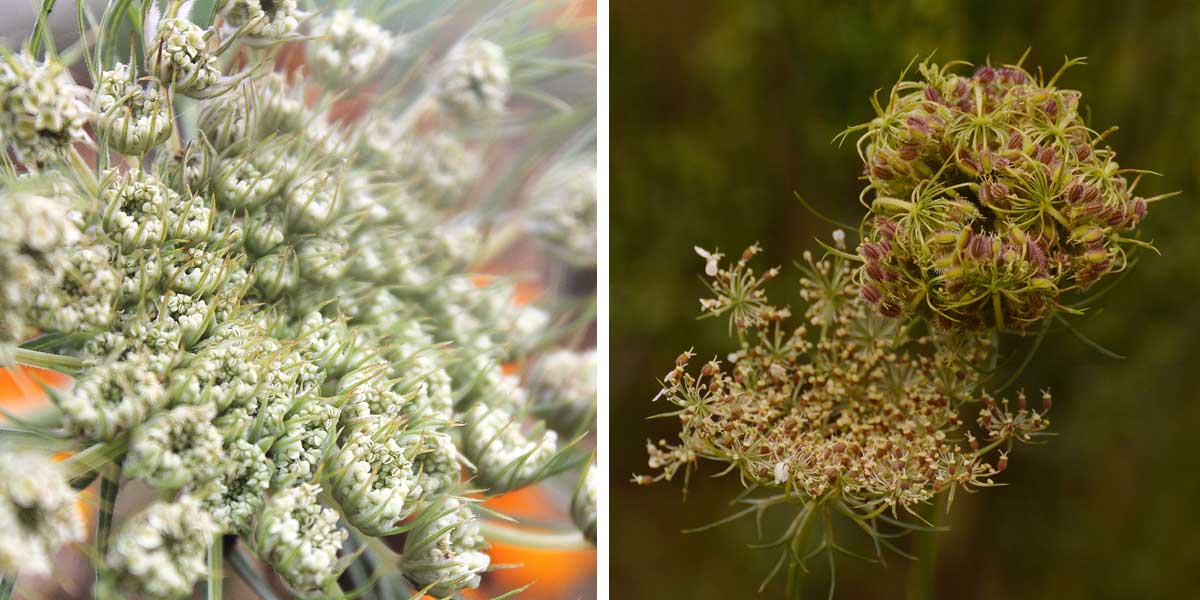
Wild carrot flowering – seed formation
Read also
Sowing vegetable seedsVarieties of Carrots
Long carrots, such as ‘de Carentan’, are better suited to deep soils and autumn or winter harvests. Half-long varieties like ‘Touchon’ are coreless and can be harvested as early as June. For heavy or compact soils, opt for half-short varieties such as ‘de Chantenay’ or round types like ‘Marché de Paris’.

Organic Carrot Berlicum 2 - Ferme de Sainte Marthe seeds - Daucus carota
- Height at maturity 30 cm
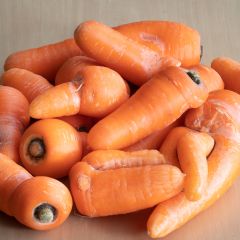
Carrot Caracas - Daucus carota
- Height at maturity 30 cm

Carrot de Carentan
- Height at maturity 25 cm
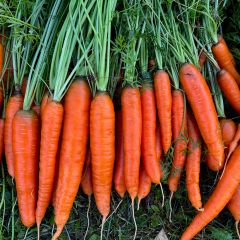
Carrot Chantenay à Coeur Rouge - Daucus carota
- Height at maturity 30 cm
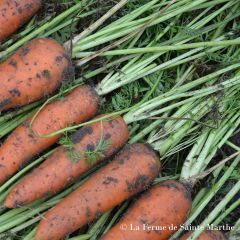
Carrot Autumn King 2 - Ferme de Sainte Marthe seeds
- Height at maturity 30 cm
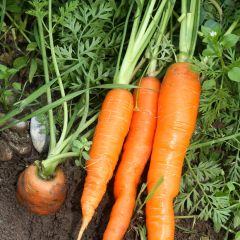
Carrot Nantes 2 - Ferme de Sainte Marthe Seeds
- Height at maturity 30 cm

Carrot Touchon - Ferme de Sainte Marthe Seeds
- Height at maturity 20 cm

Carrot Paris Market
- Height at maturity 20 cm
Unusual carrot varieties

White Carrot Blanche de Küttingen - Ferme de Sainte Marthe Seeds
- Height at maturity 30 cm
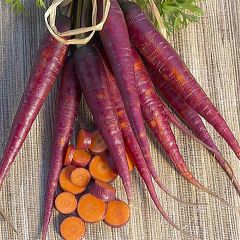
Carrot Cosmic Purple - Daucus carota
- Height at maturity 30 cm
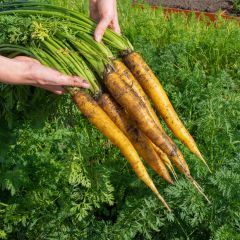
Carrot Jaune du Doubs - Ferme de Sainte Marthe untreated seeds
- Height at maturity 30 cm
Discover other Carrot seeds
View all →Available in 1 sizes
Available in 1 sizes
Available in 1 sizes
Available in 1 sizes
Available in 1 sizes
Available in 1 sizes
Available in 1 sizes
Available in 1 sizes
Available in 1 sizes
Sowing carrots
Where and When to Sow Your Carrots?
Carrots are primarily sown directly in open ground. They thrive in deep, rich, and light soils with a sunny exposure. If your soil is heavy and compact (clay-like), opt for half-long and conical varieties or round carrots.
Sowing takes place directly in situ from February to November, depending on the variety and cultivation method. Germination occurs at a minimum temperature of 7°C. Each variety has an ideal sowing period, which is indicated on the seed packet.
The sowing calendar for open ground (without protection) is as follows:
- March-April-May (main season crop) for harvesting from July to September,
- June-July (late-season crop) for harvesting from September to November.
Under unheated cover (greenhouse, polytunnel, or fleece), sow:
- February-March (early crop) for harvesting in June-July,
- October-November (late crop) for harvesting in spring.
How to Sow Carrot Seeds?
Sowing should be done in well-prepared soil. It should be weed-free, deeply loosened (with a broadfork), then raked to create a fine, debris-free tilth.
Sow directly in place and in rows:
- Draw shallow furrows 5 cm wide and 1 cm deep, spaced 25 cm apart,
- Sow thinly, optionally mixing seeds with sand or dry coffee grounds,
- Cover with fine soil, then firm gently with the back of a rake,
- Water lightly with a fine spray to avoid displacing seeds,
- Keep the soil moist until germination!
After germination (which takes about 15 days) and once seedlings are well developed, thin them out, leaving one plant every 5 to 7 cm.
Intercropping with radishes (sown simultaneously in the same row) makes carrot sowing easier, as radishes quickly mark the row and, once harvested, leave space for carrots. With clearly marked rows, weeding between them becomes simpler without risking damage to carrots.
For beginners, seed tapes are an effortless option: the seeds, embedded in biodegradable paper, are pre-spaced. These tapes sometimes contain multiple varieties, with carrot seeds occasionally paired with radish seeds. Simply bury the tape and water.
The false seedbed technique is a simple and effective method to simplify carrot cultivation, saving you weeding time. To learn more about this technique, visit our advice page: “The False Seedbed: An Effective Technique to Reduce Weeds”
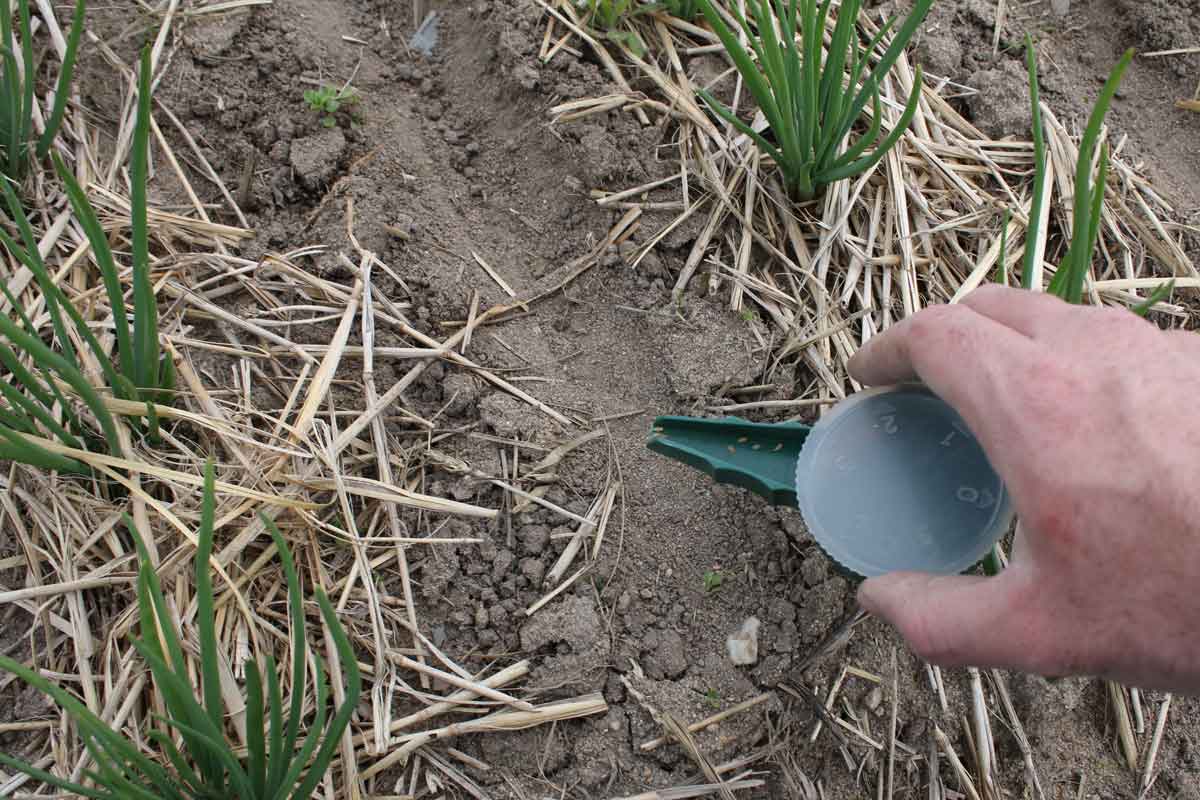
Carrot sowing between rows of shallots – see below for beneficial carrot companion planting
Pairing carrots in the vegetable garden
Carrots pair well with plants from the Amaryllidaceae family (formerly Alliaceae), meaning with garlic, onions, leeks, shallots and chives. These well-known companion plantings allow each plant to benefit from the aromatic properties of the other, helping to deter pests. Thus, alliums repel carrot fly; while carrots repel onion fly. Marigolds, an essential flower in the vegetable garden, effectively enhance this repellent effect against carrot fly.
Other beneficial pairings include beetroot, lettuce, chilli peppers and radishes, their favourite sowing companion. As mentioned earlier, radishes germinate much faster than carrots. Sowing these two plants at the same time in the same row allows the radishes to mark the row early with their quick emergence, making weeding easier. Radishes also help break up any surface crust (a problem in some soils), aiding carrot germination.
Avoid sowing carrots near dill unless it’s sparsely scattered among the carrot row for its carrot fly repellent properties. However, if dill is too abundant, it can negatively affect carrot growth (known as negative allelopathic effects).
→ Read also the best companion plants for carrots

Carrots and beetroot thrive when grown together in the vegetable patch.
Cultivation and care
Once the carrots have sprouted, thinning is the most important task for the success of the crop. Indeed, carrots planted too closely together will not thrive; they need sufficient space to develop properly. Initially, they can be thinned by leaving one carrot every 5 cm or so. Then, as they grow further, they are thinned a second time, removing every other plant. At this stage, the thinned carrots are plump enough to be enjoyed as baby carrots!
Apart from thinning, carrots require no specific maintenance, aside from regular hoeing and weeding. To minimise these tasks, we recommend mulching the soil. This will reduce the need for weeding while helping the soil retain moisture. Watering can be spaced out, but it should be generous to prevent the roots from becoming woody.
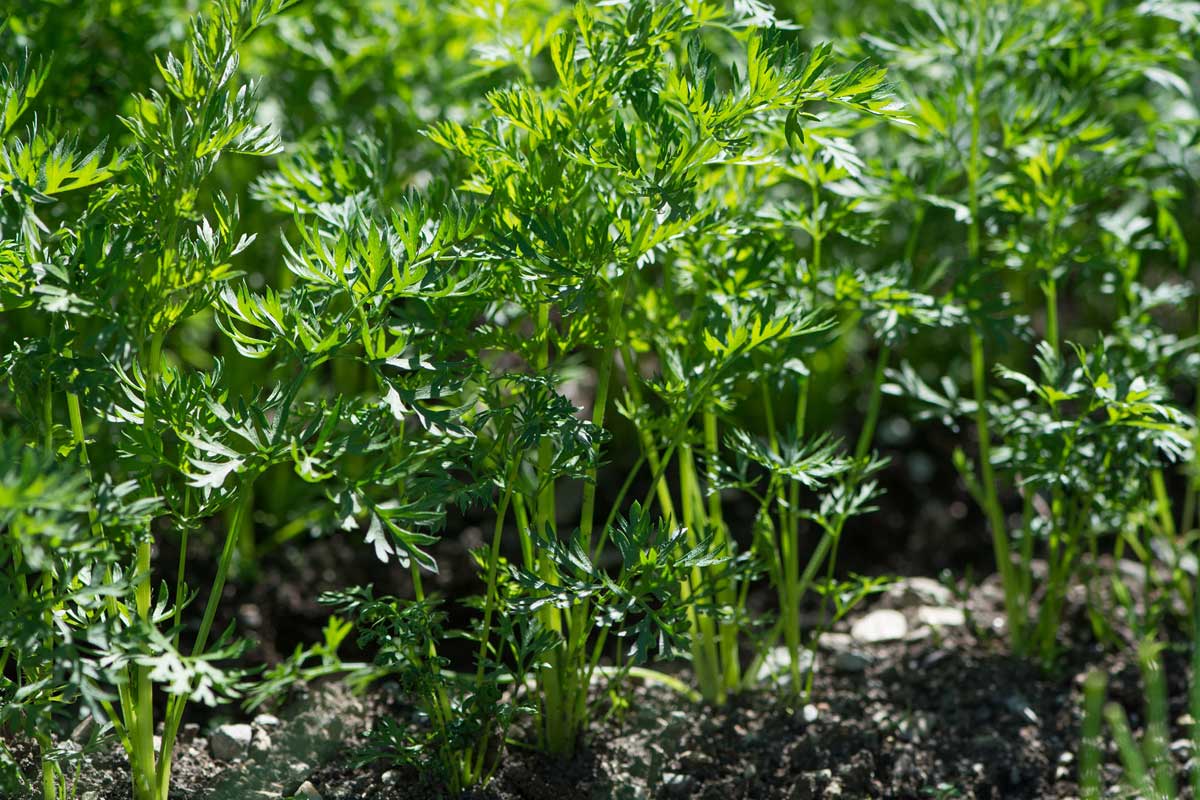
Diseases and Pests
The Carrot Fly
The main pest is the carrot fly, Psila Rosae. At the larval stage, this parasite burrows tunnels into the roots. It is present in gardens from April until early November.
Among all preventive measures, installing an insect-proof net is the most effective. However, it can be supplemented or replaced (if you believe you are not in a high-risk area) with:
- companion planting with leeks or onions,
- applying a mulch made from repellent plant waste (lavender, tansy),
- using resistant varieties such as ‘Resistofly F1’ or ‘Fly Away F1’.
Find additional advice in case of a carrot fly infestation.
Alternaria Leaf Blight
Alternaria leaf blight is a fungal disease caused by Alternaria dauci. This disease appears as brown spots that form on the edges of leaves and spread inward. Eventually, the leaves dry out completely, limiting photosynthesis and hindering proper root growth. This is why the disease causes more significant damage early in the growing season. Alternaria can occur from spring to autumn and thrives in humid conditions at temperatures between 22–25°C.
Garden management measures:
- Remove infected leaves or stems at the first signs of attack
- Remove affected carrots if the disease is more advanced
- Avoid watering foliage if possible—water at soil level, e.g., using a watering can spout.
- For recurring infections, use resistant varieties such as Boléro F1 (Vilmorin).
→ Learn more with our dedicated guide: Carrot Diseases and Pests
Harvesting and Storing
Harvesting begins 12 to 16 weeks after sowing, depending on the variety and temperatures. Use a garden fork, taking care not to damage the roots, as this would affect their storage. In regions with mild winters, carrots can remain in the ground over winter. Protect them from frost with a thick layer of dead leaves or straw, especially in more continental areas.
Another good winter storage method is to keep them in a cellar, buried in sand. In autumn, all carrots are dug up and trimmed at the crown. They are then stored in a crate filled with dry, fine sand.
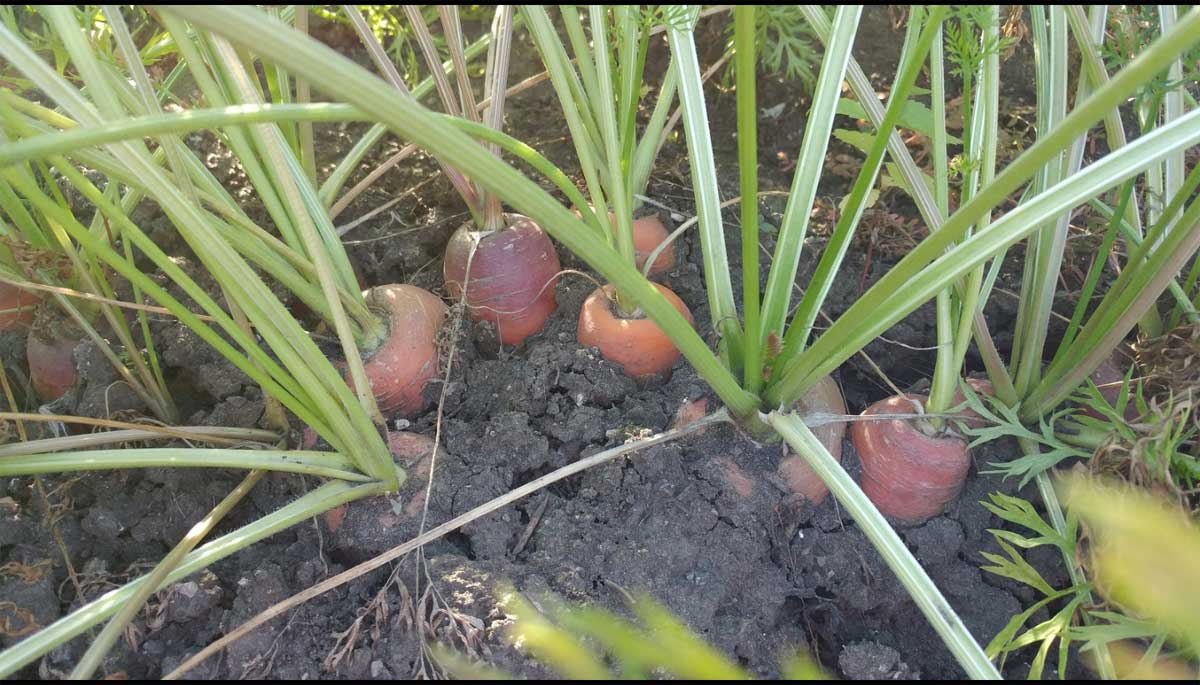
Carrots ready for harvest
→ Also discover Ingrid’s advice on lacto-fermentation preservation
Culinary uses and nutritional benefits
In the kitchen, carrots can be prepared in countless ways and accompany many dishes, from raw vegetables to desserts. Grated, steamed, simmered in stews, glazed, or even incorporated into tarts, jams, and sweet cakes—there’s no shortage of recipes where carrots take centre stage!
From a nutritional standpoint, carrots are renowned for being rich in carotenes, antioxidant molecules that may slow down cellular ageing and are beneficial for eye health. They are also believed to be high in vitamins B9, C, and E, mostly concentrated just beneath the skin, so it’s best to scrub them thoroughly with a vegetable brush to retain as many of these vitamins as possible. Carrots are also rich in minerals, particularly magnesium and potassium, which may contribute to healthy blood pressure regulation. Lastly, carrots are famous for giving the skin a healthy glow!
→ Also discover zero-waste cooking by recycling your carrot tops!
Saving Your Own Carrot Seeds
Harvesting your own carrot seeds isn’t a very common practice among gardeners, yet it’s not difficult, it’s economical, and it allows you to adapt your favourite varieties to your growing conditions.
The first year of cultivation is identical to growing for consumption. In the autumn of this first year, the carrots are harvested and then stored in sand in a cellar or heeled into the ground and covered with straw. The difference with harvesting for consumption is that the crown is preserved, leaving about 2 cm of foliage. A selection of the finest carrots can be made at this stage, discarding weaker roots, split ones, or those showing carrot fly tunnels.
In the second year, the carrots are replanted from February to April. They will flower in June, and the umbels will be ready for harvest from August onwards. Harvest as the seeds ripen by cutting entire umbels and threshing them into a container. Use a 14-mesh sieve to separate the seeds from the chaff.
Useful resources
Discover:
- Our wide range of carrots: bare seeds or seed tape
- Advice sheet: Choosing the right carrots: buying guide
- Advice sheet: Carrots, the best varieties
- Pascale explains how to make vegetable crisps
- Advice sheet: Forage plants, 5 vegetables for animals
- Pascale tells you all about the best companion plants for carrots
Frequently asked questions
-
My carrots aren't sprouting, why?
The possible reasons are numerous: - The most likely is a lack of water before germination. It is essential that the soil remains consistently moist between sowing and germination—a single watering on the day of sowing is not enough. - Your soil has formed a surface crust (battance) that prevents the seeds from sprouting. To avoid crusting, watering should be as light as possible! In the long term, the soil should be protected and enriched with organic matter to gradually develop a crumbly structure. - Carrot sowing is generally more successful in May than in March, as the soil is warmer and seeds germinate more quickly.
-
My carrots aren't growing properly, why?
Two possible reasons: - The carrots weren't thinned out enough and are too close together. It's crucial to thin them at an early stage – even if you thin them later on, it's already too late! - The second possibility relates to watering. It's best to water according to the size of the carrot, and the easiest way to check... is to test the soil! Especially in summer, verify if watering has been sufficient by probing the soil with a bulb planter (for example). If only the top 2 centimetres of soil are moist, while the carrot is already 10 cm long, then watering hasn't reached the roots properly. For effective carrot watering, water less frequently but more deeply.
- Subscribe!
- Contents


































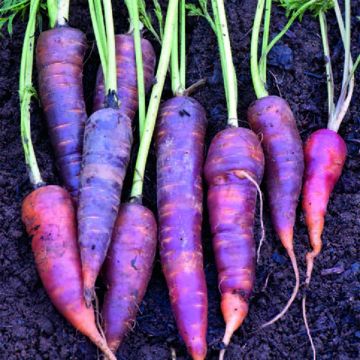
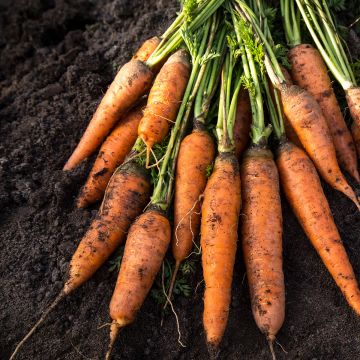
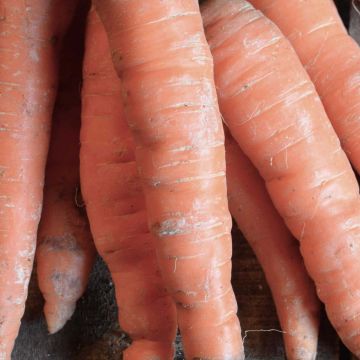


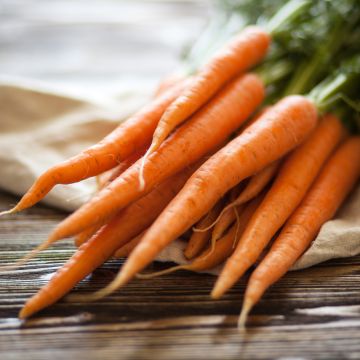

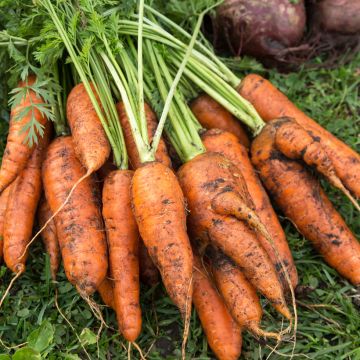
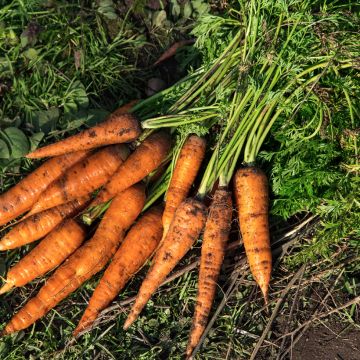
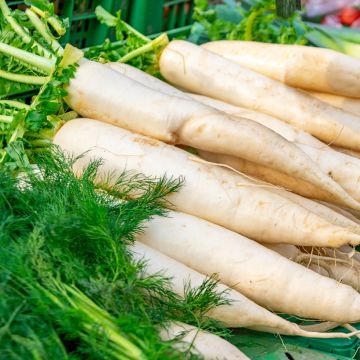
Comments